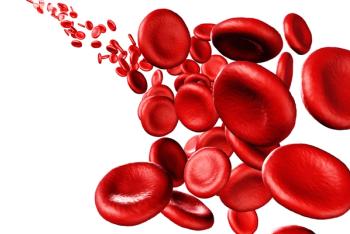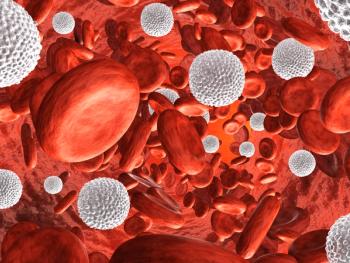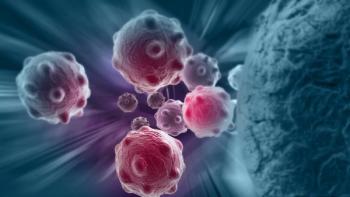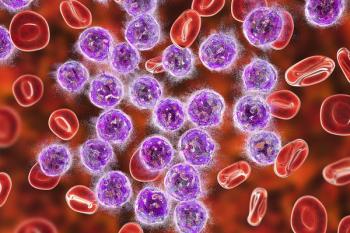
Abnormal Liver Function Linked to Survival in CLL
About one in every 25 patients with chronic lymphocytic leukemia had abnormal liver function tests, and one in four developed liver dysfunction within 10 years, according to the results of a retrospective study.
About one in every 25 patients with chronic lymphocytic leukemia (CLL) had abnormal liver function tests, and one in four developed liver dysfunction within 10 years, according to the results of a retrospective study
“Four distinct patterns of liver infiltration were observed on liver biopsy specimens-ranging from portal tract only infiltration, sinusoidal only, portal plus sinusoidal, to extensive involvement-although the type of liver infiltration did not guide treatment choices,” wrote Paul J. Hampel, MD, of the department of internal medicine, Mayo Clinic, Rochester, Minnesota, and colleagues. “Patients with abnormal liver function tests at baseline had a shorter overall survival compared to those who did not, although the time to first therapy was similar between these two groups of patients.”
According to the study, recent research has established the clinical and prognostic importance of the involvement of organ systems, such as the kidneys or skin, on the outcomes of patients with CLL. Prior to this study, little was known about the prognostic implications of liver dysfunction in this population.
Hampel and colleagues conducted this analysis of 2,336 patients with untreated, newly diagnosed CLL seen at the Mayo Clinic between 1993 and 2016. At baseline, 82 patients (3.5%) had abnormal liver function tests using a “liberal” criteria of 1.5 × ULN to define abnormal function.
Patients with abnormal tests were more likely than those with normal tests to have advanced Rai stage (21% vs 6%; P < .001), lower hemoglobin (median 13.1 vs 13.9 gm/dL; P < .001), and lower platelet count (187 × 109/L vs 200 × 109/L; P = .0261).
Of those patients without a normal test at baseline, 1,594 had a liver function tests after diagnosis at an estimated median follow-up of 59 months. With 10 years follow-up, about 25% of cases had experienced at least one abnormal liver function test when follow-up was censored at death. Again, lower platelets and hemoglobin predicted risk for development of acquired liver dysfunction at subsequent follow-up, as did CD49d expression, CD38 expression, ZAP-70 expression, unmutated IGHV, and high-risk FISH.
“A plausible theory is that these high-risk patients develop more aggressive disease with more extensive liver involvement that results in dysfunction,” the researchers wrote. “This may also explain the unexpected finding of our study, namely that patients with abnormal liver function tests at baseline had a shorter overall survival compared to those with normal liver function tests at diagnosis.”
Patients with abnormal liver function tests at baseline had a shorter overall survival compared with those with normal tests (hazard ratio, 1.80; 95% CI, 1.13–2.87; P = .014). However, the time to first therapy was no different between the two groups.
Fifty-two patients underwent liver biopsy, and CLL was in the liver tissue in the majority of cases (73%). Portal tracts were the most commonly involved region.
Newsletter
Stay up to date on recent advances in the multidisciplinary approach to cancer.

















































































